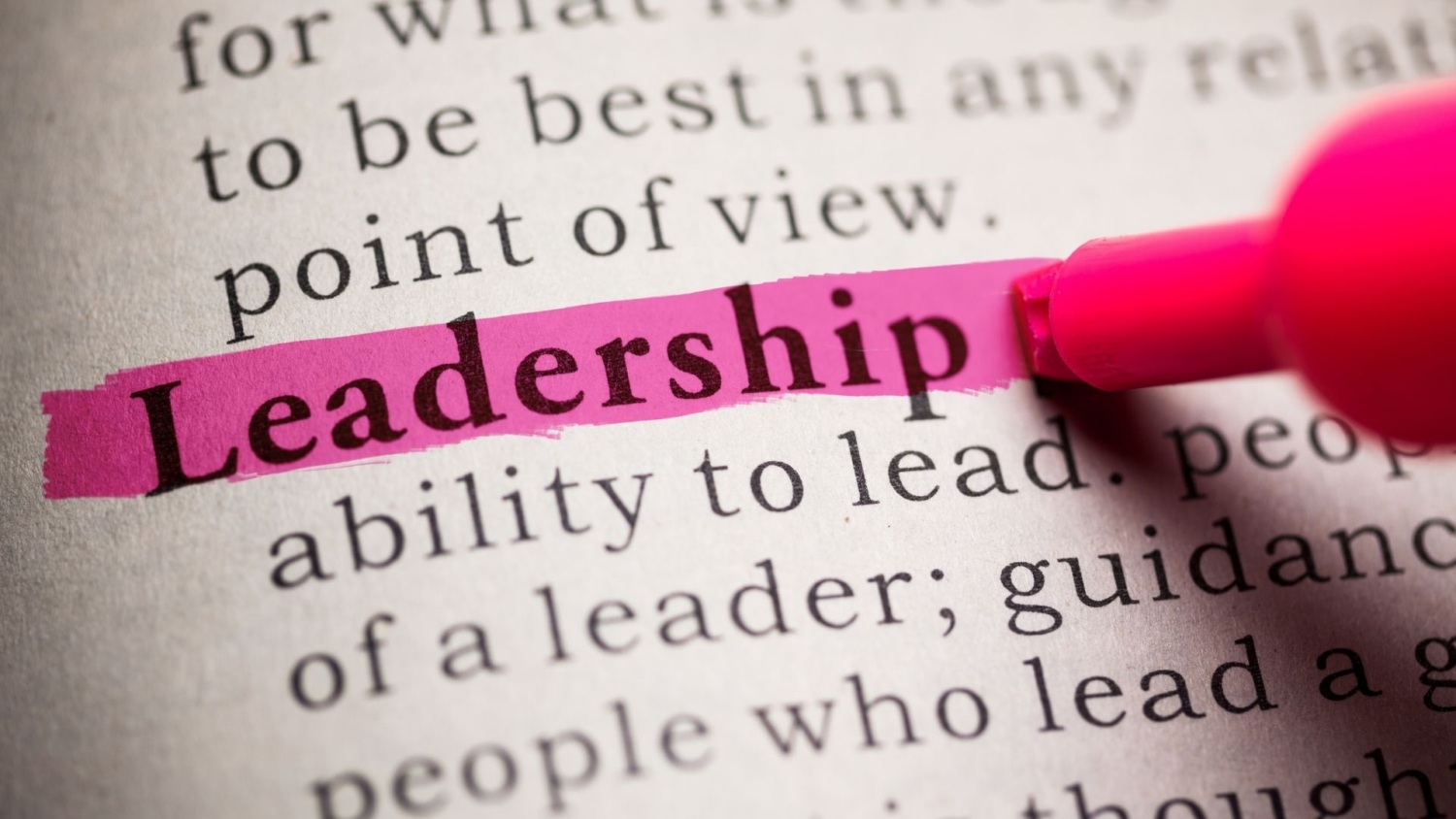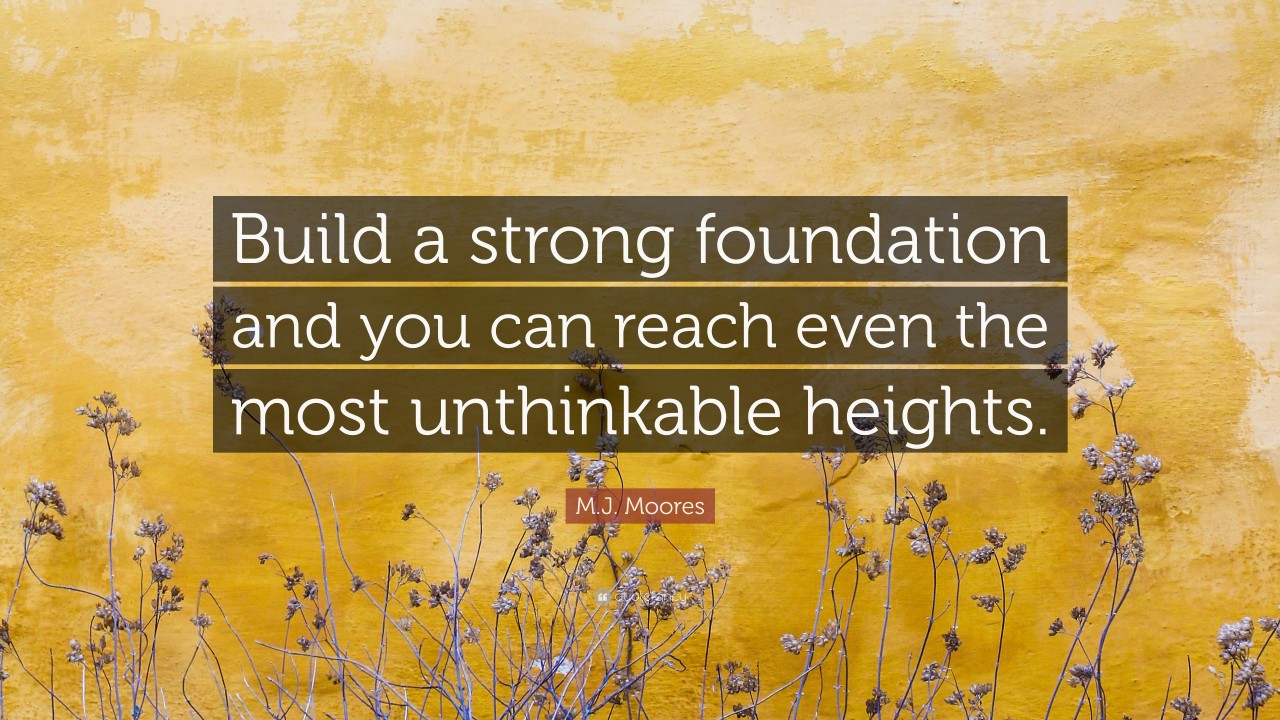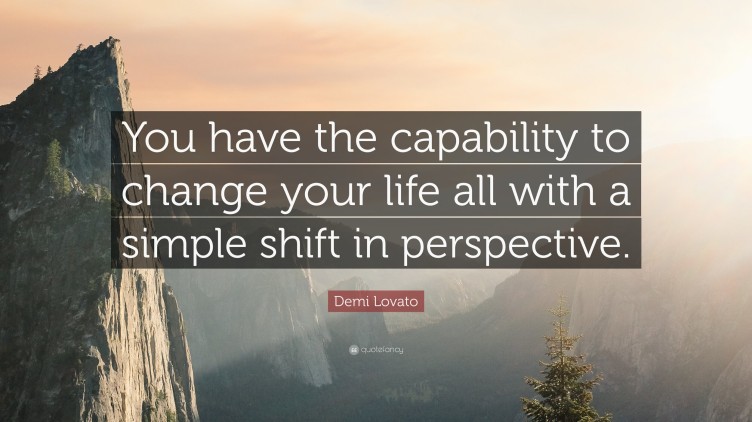Redefining Success Beyond Financial Metrics: A Call to Transform Leadership

By Rodney Bullard
CEO The Same House PBC | Former Senior Executive at Chick-fil-A / Global CSR, ESG and Marketing Leader | Best-Selling Author | Former AUSA | Former Air Force JAG l Corporate and Non-profit Board Director
In the pulsating heart of corporate America, success is often quantified by profit margins, stock prices, and bottom lines. However, as I’ve traversed the halls of leadership, I’ve arrived at a profound realization: effective leadership transcends these traditional metrics. It’s not merely about balance sheets and quarterly reports; it’s about fostering a positive impact on individuals, communities, and the world at large. The narrative of leadership is ripe for a paradigm shift. It’s high time we redefine success. Picture this: a leader whose influence reverberates not only within the boardroom but also throughout the lives of those they lead. In my view, effective leadership entails leaving an indelible mark on the world—one that extends beyond profit and loss statements. It’s about envisioning a future where success is gauged by the positive change manifested in the lives of individuals and the communities they inhabit. We inhabit an interconnected world where the actions of a leader resonate far beyond the confines of corporate headquarters. Leadership is a weighty responsibility—a responsibility to make choices that benefit not only shareholders but also employees, customers, and society at large.
Impact on Individuals, Communities, and the World
As leaders, we wield the power to shape not only the trajectory of a company but also the lives of those who comprise it. Effective leadership serves as a catalyst for personal and professional growth, offering individuals opportunities to flourish, learn, and contribute their utmost. It’s about cultivating workplaces where every employee feels valued, respected, and empowered to make meaningful contributions. But the impact of effective leadership extends far beyond the boundaries of the organization. It reaches into communities, where companies play an integral role in shaping the social fabric. By adopting a broader perspective, leaders can actively contribute to the welfare of the communities in which they operate, addressing social issues and nurturing a sense of collective responsibility. Moreover, effective leadership possesses the potential to catalyze global progress. Companies can emerge as agents of positive change, tackling pressing issues such as climate change, inequality, and poverty. By aligning business strategies with social and environmental imperatives, leaders can guide their organizations toward a future where profit is not the sole barometer of success. Let us embrace this call to transform leadership—to redefine success in terms of impact, purpose, and societal well-being. Together, let us embark on a journey toward a future where leadership is measured not just by financial metrics but by the positive difference we make in the world.
Emphasizing the Importance of Humility in Leadership

By Rodney Bullard
CEO The Same House PBC | Former Senior Executive at Chick-fil-A / Global CSR, ESG and Marketing Leader | Best-Selling Author | Former AUSA | Former Air Force JAG l Corporate and Non-profit Board Director
Defining Humility in Leadership
Humility is often misunderstood, erroneously associated with meekness or a lack of self-assurance. However, true humility in leadership is a nuanced trait that involves a realistic self-assessment, an acknowledgment of one’s strengths and weaknesses. It’s the ability to recognize that leadership is not a solo endeavor but a collaborative journey where every voice, irrespective of hierarchy, holds value. Incorporating humility into leadership requires a shift in perspective. It’s about recognizing that the best leaders are not those who boast about their accomplishments but those who acknowledge the collective effort that propels a team forward. True humility involves a genuine curiosity and openness to learning from others, regardless of their position in the organizational hierarchy.
Recognizing and Acknowledging Strengths and Weaknesses
At the heart of humility lies the willingness to confront one’s own strengths and weaknesses. This introspective journey is not a sign of vulnerability; instead, it is a demonstration of self-awareness and authenticity. Leaders who openly acknowledge their strengths foster an environment where others feel empowered to do the same. It creates a culture of transparency and trust, foundational elements for a thriving workplace. Moreover, humility allows leaders to recognize their weaknesses and, instead of viewing them as liabilities, treat them as opportunities for growth. A humble leader is not afraid to seek input and guidance from team members who possess complementary skills. This acknowledgment of limitations not only encourages continuous improvement but also sets a precedent for a culture that values collective success over individual triumphs.
The Role of Humility in Fostering Collaboration and Trust
In the fast-paced and interconnected world of business, collaboration is not just a buzzword but a necessity for success. Humility serves as the catalyst for effective collaboration by breaking down hierarchical barriers. When leaders approach their roles with humility, they create an environment where diverse perspectives are not only welcomed but actively sought after. Furthermore, humility nurtures trust within a team. Trust is a delicate yet crucial element of any successful organization. When team members witness a leader who is humble, admitting mistakes and crediting others for successes, it builds trust. This trust becomes the bedrock upon which innovation, creativity, and a shared commitment to organizational goals can flourish. Let’s continue to champion humility in leadership, recognizing its power to foster collaboration, trust, and ultimately, organizational success.
Redefining Leadership: Moving Beyond Transactional to Transformational

By Rodney Bullard
CEO The Same House PBC | Former Senior Executive at Chick-fil-A / Global CSR, ESG and Marketing Leader | Best-Selling Author | Former AUSA | Former Air Force JAG l Corporate and Non-profit Board Director
In the realm of leadership, where confidence and assertiveness often take center stage, humility emerges as a quiet yet powerful force. It’s not a sign of weakness, as some might misconstrue, but a potent character strength that can transform individuals and organizations alike. As we embark on this chapter of our leadership journey, let’s unravel the layers of humility, exploring its nuances, impact, and the profound transformation it can bring.
Defining Humility in Leadership
Humility is often misunderstood, erroneously associated with meekness or a lack of self-assurance. However, true humility in leadership is a nuanced trait that involves a realistic self-assessment, an acknowledgment of one’s strengths and weaknesses. It’s the ability to recognize that leadership is not a solo endeavor but a collaborative journey where every voice, irrespective of hierarchy, holds value. Incorporating humility into leadership requires a shift in perspective. It’s about recognizing that the best leaders are not those who boast about their accomplishments but those who acknowledge the collective effort that propels a team forward. True humility involves a genuine curiosity and openness to learning from others, regardless of their position in the organizational hierarchy.
Recognizing and Acknowledging Strengths and Weaknesses
At the heart of humility lies the willingness to confront one’s own strengths and weaknesses. This introspective journey is not a sign of vulnerability; instead, it is a demonstration of self-awareness and authenticity. Leaders who openly acknowledge their strengths foster an environment where others feel empowered to do the same. It creates a culture of transparency and trust, foundational elements for a thriving workplace. Moreover, humility allows leaders to recognize their weaknesses and, instead of viewing them as liabilities, treat them as opportunities for growth. A humble leader is not afraid to seek input and guidance from team members who possess complementary skills. This acknowledgment of limitations not only encourages continuous improvement but also sets a precedent for a culture that values collective success over individual triumphs.
The Role of Humility in Fostering Collaboration and Trust
In the fast-paced and interconnected world of business, collaboration is not just a buzzword but a necessity for success. Humility serves as the catalyst for effective collaboration by breaking down hierarchical barriers. When leaders approach their roles with humility, they create an environment where diverse perspectives are not only welcomed but actively sought after. Furthermore, humility nurtures trust within a team. Trust is a delicate yet crucial element of any successful organization. When team members witness a leader who is humble, admitting mistakes and crediting others for successes, it builds trust. This trust becomes the bedrock upon which innovation, creativity, and a shared commitment to organizational goals can flourish. Let’s continue to champion humility in leadership, recognizing its power to foster collaboration, trust, and ultimately, organizational success.
Building Bridges: The Power of Social Contracts in Society

By Rodney Bullard
CEO The Same House PBC | Former Senior Executive at Chick-fil-A / Global CSR, ESG and Marketing Leader | Best-Selling Author | Former AUSA | Former Air Force JAG l Corporate and Non-profit Board Director
In a diverse society, individuals with different backgrounds and expectations come together to serve the collective good. However, power imbalances can lead to the interests of a few overshadowing those of the many. Social contracts provide a framework for ensuring that everyone has a voice in creating solutions to communal challenges. This promotes collaboration, establishes acceptable behavior, and fosters inclusivity.
Fostering Collaboration and Inclusivity
Collaboration is essential for progress and prosperity in a society marked by diversity. Social contracts provide a platform for individuals with differing perspectives and ideologies to unite, transcending barriers and working towards common goals. By valuing each person’s input and fostering an environment of mutual respect, social contracts enable inclusive decision-making processes where all voices are heard and valued.
The Importance of Acceptable Behavior
At the heart of social contracts lies the establishment of acceptable behavior that upholds the rights and dignity of all individuals, regardless of their status or authority. Trevor Noah, host of The Daily Show, aptly describes society as a contract among human beings, wherein common rules, ideals, and practices define the collective identity. By adhering to these shared principles, society functions cohesively, fostering trust and cooperation among its members.
Navigating Complex Dynamics
While social contract concepts are instrumental in promoting collaboration and inclusivity, navigating complex dynamics can pose challenges. Egos, conflicting viewpoints, and power dynamics often come into play, requiring a concerted effort to transcend individual interests and prioritize the common good. By fostering a culture of open dialogue and constructive engagement, social contracts enable societies to navigate challenges and forge collective solutions that benefit all.
Challenges and Controversies
Despite its significance, the Social Contract theory has not been without controversy. Critics argue that it can be used to justify tyranny and oppression, as those in power may exploit the social contract to serve their interests. Additionally, some skeptics question the feasibility of living up to the ideals proposed by social contracts, citing human nature and inherent biases as obstacles to cooperation.
Moving Forward: Strengthening Social Contracts
As society continues to evolve, it is imperative to strengthen social contracts to promote collaboration, inclusivity, and equitable decision-making. This requires a commitment to upholding shared values, fostering dialogue across diverse perspectives, and addressing systemic inequalities that undermine the principles of social contracts. By embracing the transformative power of social contracts, societies can build bridges, transcend divides, and create a more just and equitable world for all.
In today’s world, which is increasingly interconnected, social contracts play a vital role in encouraging collaboration, promoting inclusivity, and upholding shared values. By adhering to the principles of social contracts and navigating complex dynamics with integrity and empathy, societies can overcome challenges, build bridges, and create a future where the collective good prevails over individual interests. It is important to reaffirm our commitment to strengthening social contracts and working towards a more just and harmonious society for generations to come.
The Power of Confidence and Conviction: Building Bridges Within Ourselves

By Rodney Bullard
CEO The Same House PBC | Former Senior Executive at Chick-fil-A / Global CSR, ESG and Marketing Leader | Best-Selling Author | Former AUSA | Former Air Force JAG l Corporate and Non-profit Board Director
When we start new projects or pursue our objectives, it’s essential to have a sense of certainty. This sense gives us the confidence and determination we need to act and make progress. However, being sure about something is not enough. Real success requires a more profound foundation based on confidence and conviction.
Confidence is the belief in our abilities. Conviction is the belief in the worthiness and nobility of our goals. Together, confidence and conviction enable us to make a meaningful impact. However, hesitation often stems from a lack of self-confidence. To bridge the gap, we must align our beliefs, values, and actions. We must live authentically and take deliberate steps toward realizing our goals.
Achieving congruence is a journey of self-discovery and personal growth. It involves diving deep into our innermost beliefs and desires and taking intentional action to align our lives with them. It requires us to cultivate a mindset of openness, acceptance, and empathy towards ourselves and others, creating an environment that fosters growth and development.
One way to cultivate congruence is through self-reflection and introspection. By asking ourselves to probe questions and examining our thoughts, feelings, and behaviors, we can gain insight into our inner workings and identify areas where we may be out of alignment. From there, we can take proactive steps to bring ourselves into greater harmony and alignment with our convictions.
Ultimately, achieving congruence between confidence and conviction is not just about personal success; it is about making a positive impact in the world. When we are aligned with our true selves and our deepest aspirations, we become beacons of inspiration and empowerment for others. We lead by example, showing others what is possible when we dare to pursue our dreams with unwavering determination and conviction.
In the words of Jesus, “All I have is yours, and all you have is mine. And glory has come to me through them. I will remain in the world no longer, but they are still in the world, and I am coming to you. Holy Father, protect them by the power of your name–the name you gave me–so that they may be one as we are one” (John 17:10-11). As we align ourselves with our purpose and pursue our dreams, let us remember the power of confidence and conviction to bridge the gap within ourselves and unite us with others in a shared mission of love and service.
The Art of Compromise: Building Bridges for Win-Win Solutions

By Rodney Bullard
CEO The Same House PBC | Former Senior Executive at Chick-fil-A / Global CSR, ESG and Marketing Leader | Best-Selling Author | Former AUSA | Former Air Force JAG l Corporate and Non-profit Board Director
Compromise is a fundamental aspect of human interaction, allowing individuals to navigate differences and reach agreements that benefit all parties involved. From childhood playground negotiations to complex discussions in the workplace, the ability to compromise is essential for fostering relationships, resolving conflicts, and achieving mutually beneficial outcomes. In this exploration of the art of compromise, we delve into its significance, challenges, and the transformative power of finding common ground.
The Foundation of Compromise
At its core, compromise involves the settlement of differences through mutual concessions, where conflicting or opposing claims are adjusted through reciprocal modification of demands. This foundational principle is instilled in us from a young age, as we learn to share, negotiate, and collaborate with others. By recognizing the value of compromise, individuals can build trust, strengthen relationships, and cultivate a sense of cooperation within their communities.
Navigating Complexity and Challenges
As we mature, the complexities of compromise may intensify, with issues becoming more significant and consequences more profound. In the face of differing opinions and conflicting interests, the temptation to adopt a “my way or the highway” mentality may arise, leading to stand-offs and communication breakdowns. However, true courage lies in the willingness to listen, empathize, and seek solutions that benefit the majority rather than serving individual egos or agendas.
The Value of Compromise in Leadership
Effective leadership entails not only the ability to articulate a vision but also the capacity to engage in dialogue, negotiate, and find common ground. Leaders who prioritize compromise over confrontation foster environments of trust, collaboration, and innovation, enabling their teams to navigate challenges and seize opportunities collectively. As highlighted in an article in Forbes, the reluctance to compromise can hinder progress and erode trust, ultimately undermining the interests of all involved.
Building Bridges for Win-Win Solutions
To achieve success that benefits everyone involved, individuals can bridge divides, build consensus, and embrace the art of compromise. By valuing diverse perspectives, engaging in constructive dialogue, and seeking win-win solutions, we can overcome obstacles, build resilient communities, and achieve shared goals. The courage to compromise is not a sign of weakness but rather a testament to our commitment to fostering understanding, cooperation, and harmony in an increasingly complex world.
In a world marked by diversity and competing interests, the art of compromise serves as a beacon of hope, guiding us toward collaboration, empathy, and collective progress. By embracing compromise as a cornerstone of our interactions, we can transcend differences, build bridges, and create a future where mutual respect, understanding, and cooperation prevail. Let us reaffirm our commitment to finding common ground, forging connections, and working together towards a brighter and more inclusive tomorrow.
The Foundation

By Rodney Bullard
CEO The Same House PBC | Former Senior Executive at Chick-fil-A / Global CSR, ESG and Marketing Leader | Best-Selling Author | Former AUSA | Former Air Force JAG l Corporate and Non-profit Board Director
Bridges are not just about physical infrastructure; they are also symbolic of the connections we forge with one another. They represent the bonds of friendship, the sharing of ideas, and the exchange of resources. Without bridges, we would be isolated and cut off from the opportunities and experiences that enrich our lives.
But building bridges is not enough; we must also ensure that they are used and maintained. It takes a collective effort to keep bridges in good condition, to ensure they remain safe and accessible for all who need them. This requires ongoing investment, both in terms of resources and commitment from the community.
Moreover, bridges must be built with inclusivity and accessibility in mind. They should be designed to accommodate everyone, regardless of their age, ability, or background. When we prioritize inclusivity in bridge-building, we create spaces where all individuals feel welcome and valued.
In our journey to build bridges, we must also be mindful of the narratives we create about them. Fear of the unknown can lead to misconceptions and stereotypes, preventing us from fully embracing the opportunities that lie on the other side. By challenging these false narratives and embracing the spirit of exploration, we can unlock the full potential of the bridges we build.
Ultimately, building bridges is about more than just reaching a destination; it is about fostering connections, promoting understanding, and creating a more inclusive and equitable society. As we continue our journey, let us remember the power of bridges to unite us and propel us forward toward a brighter future for all.
Shifting Perspectives: Caring for the Company Beyond Profits, Making a Difference

By Rodney Bullard
CEO The Same House PBC | Former Senior Executive at Chick-fil-A / Global CSR, ESG and Marketing Leader | Best-Selling Author | Former AUSA | Former Air Force JAG l Corporate and Non-profit Board Director
In the fast-paced world of business, it’s easy to become fixated on profit margins and quarterly reports. However, amidst the hustle and bustle, it’s crucial to pause and reassess our priorities. As the CEO of The Same House, I’ve come to realize that taking care of the company goes far beyond just the bottom line—it’s about embracing a broader perspective that encompasses the well-being of our employees, our communities, and our collective future.
True success isn’t measured solely by financial metrics, but by the impact we have on the world around us. We must make efforts to shift our focus from short-term gains to long-term sustainability and social responsibility. By prioritizing the well-being of your company, you can create a more resilient and prosperous future for everyone involved.
Taking care of the company means investing in the holistic well-being of your employees. Recognize that our greatest asset lies in the talented and dedicated individuals who drive our organizations forward. Initiatives aimed at promoting work-life balance, fostering a culture of diversity and inclusion, and providing opportunities for professional development and growth must be the priority. By nurturing a supportive and inclusive workplace environment, we empower our employees to thrive personally and professionally, ultimately leading to greater productivity and success for our company.
But the commitment to taking care of the company must extend beyond the walls of our offices. We are part of a larger ecosystem that includes our local communities, our planet, and future generations. That’s why we must make sustainability and corporate social responsibility integral components of our business strategy. From implementing environmentally friendly practices to supporting community outreach programs, we all must strive to make a positive impact on the world around us and leave a legacy of responsible stewardship for future generations to inherit.
Taking care of the company is about embracing a broader perspective that encompasses the well-being of our employees, our communities, and our planet. By shifting our focus from the bottom line to a more holistic approach, we not only create a more sustainable and prosperous future for our company but also contribute to the greater good of society We must commit to leading by example and inspiring others to join us on this journey towards a brighter and more compassionate world.
As we continue our journey of taking care of the company, remain steadfast in your commitment to making a positive impact in every facet of your operations. Understand that the road ahead may present challenges but be unwavering in our determination to navigate them with integrity, empathy, and resilience.
True success is measured not only by the strength of our balance sheets but also by the positive change we create in the lives of others. Whether it’s through corporate social responsibility initiatives, commitment to diversity and inclusion, or our dedication to environmental sustainability, we are driven by a shared vision of building a better world for all.
As we look to the future, we invite you to join us in our mission of taking care of the company. Together, we can harness the power of business as a force for good and create a brighter, more sustainable future for generations to come.
The Road to Success: Prioritizing Long-Term Sustainability and Employee Well-Being

By Rodney Bullard
CEO The Same House PBC | Former Senior Executive at Chick-fil-A / Global CSR, ESG and Marketing Leader | Best-Selling Author | Former AUSA | Former Air Force JAG l Corporate and Non-profit Board Director
In today’s fast-paced business world, it’s easy to become preoccupied with short-term gains and instant gratification. People-first companies understand that long-term sustainability and employee well-being are essential for a thriving and resilient organization, not just quarterly profits.
Long-term sustainability is about more than just environmental responsibility—it’s about ensuring the continued success and viability of the business for years to come. People-first companies understand that sustainable practices are not only good for the planet but also essential for maintaining a competitive edge in an increasingly complex and interconnected world. From reducing carbon emissions and minimizing waste to investing in renewable energy and sustainable supply chains, these organizations are committed to making responsible choices that benefit both the bottom line and the planet.
But sustainability goes beyond just environmental considerations—it also encompasses social and economic factors. People-first companies prioritize ethical business practices, fair labor standards, and community engagement as part of their commitment to long-term sustainability. By fostering positive relationships with employees, customers, suppliers, and communities, these organizations create a foundation of trust and goodwill that pays dividends in the long run.
Employee well-being is another cornerstone of success for people-first companies. These organizations understand that their greatest asset is their workforce, and they prioritize the health, safety, and happiness of their employees above all else. From offering competitive salaries and benefits to promoting work-life balance and mental health support, people-first companies create an environment where employees feel valued, respected, and empowered to do their best work.
But prioritizing employee well-being goes beyond just offering perks and benefits—it’s about creating a culture of care and support where employees feel heard, appreciated, and invested in the success of the organization. People-first companies foster open communication, collaboration, and transparency at all levels, ensuring that employees have a voice in decision-making processes and feel empowered to contribute their ideas and feedback.
Prioritizing long-term sustainability and employee well-being is not just a moral imperative—it’s also a strategic advantage. People-first companies understand that by investing in sustainable practices and supporting their employees, they can create a more resilient, competitive, and successful organization that benefits everyone involved. As we look to the future, let us continue to prioritize sustainability and well-being as integral components of a thriving and prosperous business model.
Celebrating Women’s History Month: Building Bridges and Empowering Communities

By Rodney Bullard
CEO The Same House PBC | Former Senior Executive at Chick-fil-A / Global CSR, ESG and Marketing Leader | Best-Selling Author | Former AUSA | Former Air Force JAG l Corporate and Non-profit Board Director
As we celebrate Women’s History Month, it’s essential to recognize the invaluable contributions of women in shaping our communities, driving progress, and fostering a culture of inclusivity and empowerment. In the spirit of building bridges and embracing The Same House mentality, let’s reflect on the transformative power of women’s leadership and their impact on communities worldwide.
Women have long been at the forefront of social change, breaking barriers, and challenging the status quo to create a more equitable and just society. Their leadership is characterized by resilience, compassion, and a commitment to uplifting others—qualities that align perfectly with the same house ethos of collective responsibility and community building.
Throughout history, women have played pivotal roles in bridging divides and fostering unity among diverse groups. Whether through grassroots activism, political leadership, or entrepreneurial endeavors, women have demonstrated a remarkable ability to build bridges across differences and bring people together in pursuit of common goals.
In today’s interconnected world, women continue to serve as catalysts for positive change, driving innovation, promoting diversity, and championing social justice. Their leadership extends beyond traditional boundaries, encompassing a wide range of sectors and industries, from business and technology to education and healthcare.
As we honor the trailblazing women who have paved the way for progress, let’s also recognize the importance of amplifying women’s voices, supporting their leadership aspirations, and creating opportunities for them to thrive. By embracing diversity and inclusion, we can harness the full potential of women’s talent and expertise to build stronger, more resilient communities.
At the heart of Women’s History Month is a celebration of the remarkable achievements and contributions of women from all walks of life. It’s a time to reflect on the progress we’ve made, acknowledge the challenges that lie ahead, and recommit ourselves to building a more inclusive and equitable future for all.
As we look to the future, let’s draw inspiration from the women who have come before us and pledge to continue their legacy of leadership, activism, and community engagement. Together, we can build bridges, foster collaboration, and create a world where every individual—regardless of gender—has the opportunity to thrive and make a difference.
Let us celebrate Women’s History Month not only as a time to honor the past but also as a call to action to shape a better tomorrow—one where women’s voices are heard, their contributions are valued, and their leadership is recognized as essential to building a brighter future for us all.
Shifting the Spotlight: Celebrating Community Heroes

By Rodney Bullard
CEO The Same House PBC | Former Senior Executive at Chick-fil-A / Global CSR, ESG and Marketing Leader | Best-Selling Author | Former AUSA | Former Air Force JAG l Corporate and Non-profit Board Director
An important shift is taking place in the tapestry of community engagement, transcending the traditional boundaries of corporate accomplishments. As a result of this movement, the spotlight is redirected away from corporate achievements and towards the very communities set to reap the greatest benefits. Initiatives like the Beloved Benefit, operating under the The Same House approach, stand as poignant exemplars of this shift, where the narrative pivots from corporate acclaim to the unsung heroes — organizations making a substantial difference in the lives of individuals and communities.
Beyond Corporate Achievements
While corporate achievements merit acknowledgment, the heart of community engagement beats recognizing the profound impact on the people and places touched by these initiatives. Shifting the spotlight involves moving beyond financial metrics and reports, unveiling the stories of resilience, hope, and transformation within the communities.
The Beloved Benefit: A Paradigm Shift
The Same House approach, embodied by initiatives like the Beloved Benefit, signifies a paradigm shift in community engagement. No longer do organizations bask in the spotlight; instead, it’s the communities and the honored organizations that step into the forefront. These entities become the unsung heroes, celebrated for their tireless efforts and contributions to creating positive change.
Communities as the Heroes
In this redefined narrative, communities emerge as the heroes — the focal point of attention and admiration. The Same House approach recognizes that true impact is measured not just in numbers but in the lives touched, the opportunities created, and the hope restored. By shining the spotlight on communities, organizations acknowledge the symbiotic relationship between their success and the well-being of those they serve.
A New Era of Community Engagement
Shifting the spotlight to the community represents a new era of community engagement. It’s a recognition that true success is not just about corporate achievements but about the positive impact on the lives of real people. The Same House approach, through initiatives like the Beloved Benefit, sets the stage for a more compassionate and community-centric approach to making a difference in the world. It’s a call to celebrate the unsung heroes, the organizations, and the communities working together for positive change.
Navigating Leadership: The Power of Process Understanding and Clear Communication

By Rodney Bullard
CEO The Same House PBC | Former Senior Executive at Chick-fil-A / Global CSR, ESG and Marketing Leader | Best-Selling Author | Former AUSA | Former Air Force JAG l Corporate and Non-profit Board Director
In effective leadership, understanding the ‘what’ of a task is not enough. The true essence lies in understanding the ‘how’ and skillfully communicating the ‘why.’ This process of comprehension is crucial for both organizations and individuals involved in community initiatives, reshaping narratives and placing the community at the center.
Beyond the Surface: Understanding the ‘How’
Effective leadership transcends surface-level comprehension. It delves into the intricacies of the ‘how’ — the methodologies, the strategies, and the nuanced processes that underpin actions. Understanding the ‘how’ isn’t just about following a procedure; it’s about grasping the intricacies of leading with insight and adaptability.
Communicating the ‘Why’: A Beacon of Clarity
Clear communication is the beacon that guides effective leadership. It’s not merely transmitting information but elucidating the ‘why’ behind every action. Why does this initiative matter? Why is the community at the heart of our endeavors? Answering these questions creates a narrative that resonates, fostering a shared understanding and commitment.
Crucial for Community Initiatives
Process understanding and clear communication are especially crucial in the realm of community initiatives. These initiatives aren’t just about ticking boxes or meeting quotas; they’re about creating tangible, positive change. Knowing the ‘how’ ensures that efforts are well-directed, resources optimized, and actions impactful.
From Corporate Actions to Tangible Impact
Clear communication coupled with process understanding changes the storytelling dynamic. It takes the narrative from a mere recitation of corporate actions to an immersive tale of real-world impact. It’s about conveying not just what was done but the positive changes witnessed in the lives and communities touched by these actions.
The Ripple Effect of Understanding and Communication
Understanding the ‘how’ and communicating the ‘why’ create a ripple effect. It fosters a culture where individuals within the organization grasp the significance of their roles in the broader context. It’s a catalyst for motivated teams, aligned goals, and a collective commitment to creating meaningful change.
Effective leadership hinges on the synergy between process understanding and clear communication. As leaders, it is our responsibility to not only know the ‘what’ but to delve into the ‘how’ and articulate the ‘why.’ By making the community the hero, we shift the narrative toward tangible impact, creating a legacy of leadership that resonates beyond the confines of corporate actions. Through understanding and communication, we chart a course for impactful leadership that transforms communities and leaves an indelible mark on the world.

